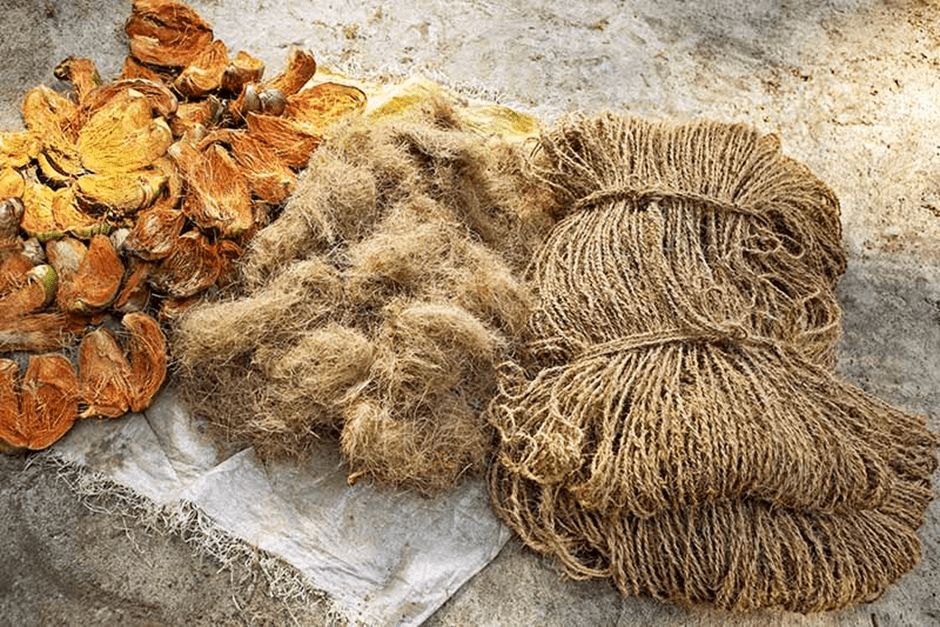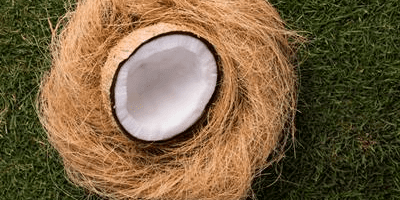Abstract:
Coir fiber is the lignocellulosic fiber which is natural in its terms. It has high tensile strength and elongation properties. The major advantage of being a natural fiber is that it is biodegradable. Coir fiber is called “The Golden Fiber” because of its golden color shade.
Coir is an eco-friendly fiber and has tremendous potential in India as well as the rest of the World for many applications. Research and development are still being in process to find more uses of coir fiber.
Introduction:
Coir is a natural seed hair fiber, which is obtained from an outer shell of the coconut which is also called a husk. This fiber belongs to the group of hard structured fibers and has lignocellulosic nature. These fibers are coarse, rough, stiff, and reddish-brown. It has the advantage of stretching beyond its elastic limit. It also has resistance to microbial degradation and salty water.
India and Sri Lanka lead the coir fiber and its production. Indian coir is available in the market in various forms like raw fiber, spun fiber, rugs, mats, ropes, and many other applications.
The Total world coir fiber production is 250,000 tons. The coir fiber industry is important in some areas of the developing world. In India, the coastal region of Kerala State, itself, produces 60% of the total world supply of coir fiber. On the other hand, Sri Lanka produces 36% of the total world fiber output.
Process:
The yield of fiber depends upon the season, method of extraction, and quality of fiber produced. The Retting process plays a key role in coir manufacturing. The retting period ranges from 6 to 10 months. Net, Stake, and Pit are the three methods followed in the retting process. The steeped husk is then kept in water. This usually takes three to four months for the action of micro-organisms on husks. These microorganisms are vital agents in retting processes. Retting also loosens the fiber as microorganisms break down the pectin components present in the fiber.
After the procedure of retting, the husks are taken out and washed in clear water to get rid of mud and dirt. After this, the outer skin or outer layer of the husk is peeled off and beaten on the wooden block for the separation of fiber. The fibers are then cleaned with water and kept for sun drying. For obtaining superior fibers, they are combed in the willowing machine. After this process, the fibers are made into slivers and sent off for spinning.
Properties of Coir fiber:
It is a multicellular and natural cellulosic fiber. Coir fiber has resistance to water and mechanical wear, also it is elastic. It is also moth and rot resistant. It is biodegradable, also it is a good insulator of heat. It is a tough, strong, and durable fiber.

IMAGE SOURCE: www.gardenspath.com
Uses of Coir fiber:
Coir is majorly used in brushes, doormats, mattresses, and sacking. A little amount is also used to make twine. Pads are also made from coir fiber by using the machine. A large proportion of brown coir pads are sprayed with rubber latex so that the fibers get bonds with each other and are called rubberized coir, which is used majorly in the upholstery padding for the automobile sector in Europe. This rubberized coir material is also used for insulation and packaging purposes. The coir in India is mostly used for rope and mat manufacture. Coir is also recommended as a substitute for milled peat moss as it is bacteria-free.
Conclusion:
As Coir fiber is natural and biodegradable, it causes no harm to the environment. The use of Coir can be made for various applications and still research is going for further identification of applications and advancement in processes.
Reference:
- Characteristics of mechanical properties of coir-fibre/rubber composite – 2020
https://iopscience.iop.org/article/10.1088/1742-6596/1511/1/012065/pdf
- Coir board ministry of MSMEs, Government of India
http://coirboard.gov.in/?page_id=60
- Journal of Natural Fibers Coir Fiber–Process and Opportunities -dated on January 2007
Featured Image Source: www.agriculture-eprt.com


